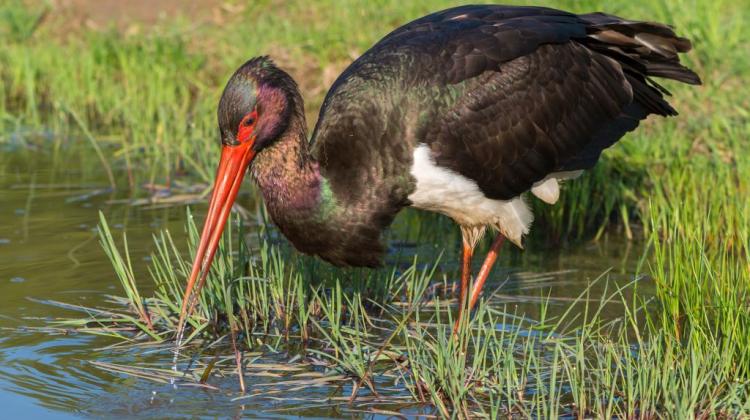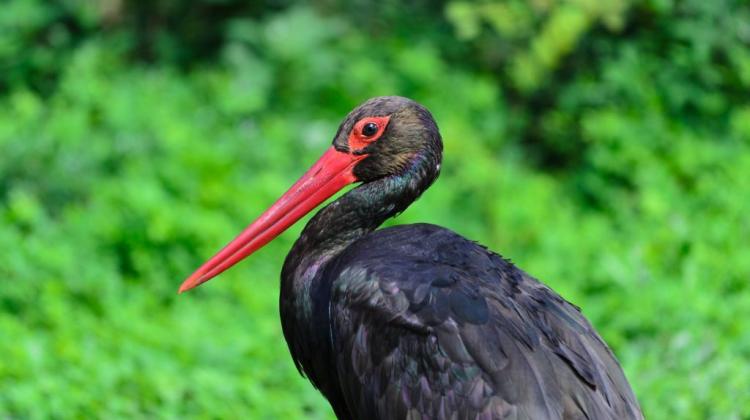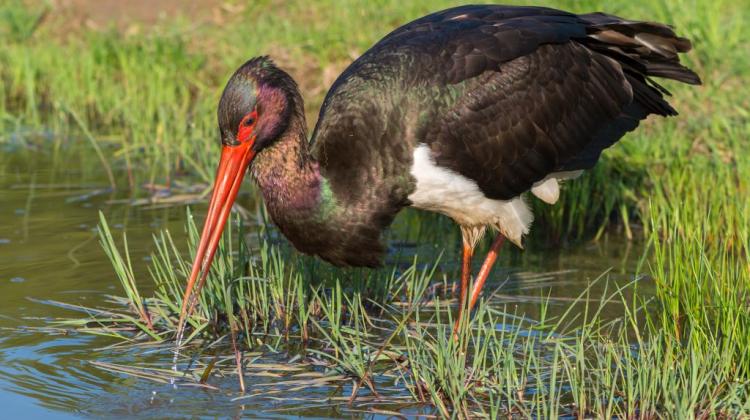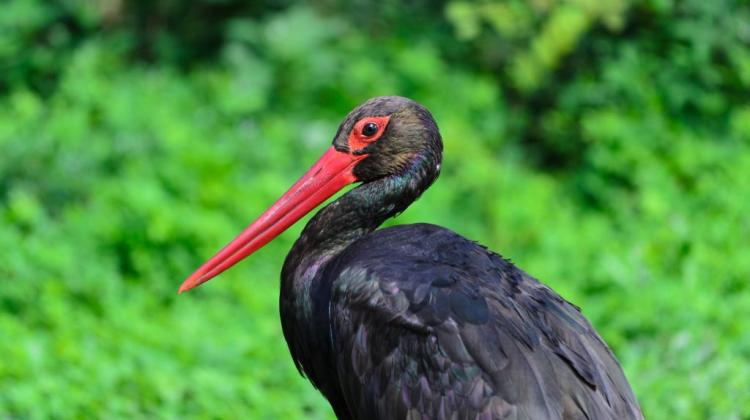Internet users are tracking the flight of black storks from Łódź province to Africa

By which route do black storks migrate to Africa? The answer to this question may be provided by the next phase of a unique research and educational project of the Regional Directorate of State Forests in Łódź. Tracking bird migration is possible with special transmitters.
The project, run jointly by Łódź foresters and the Eagle Conservation Committee, began in the spring of this year. Before the return of black storks from Africa, naturalists installed in two nests approx. 20 m above the ground.
Throughout the breeding season the scenes from the lives of two pairs of storks were broadcasted online. After the three chicks that hatched in a nest built on an oak had been grabbed by a hawk, the only heroes of this "series" were two young birds reared in the nest on a pine tree.
In early July the chicks - each of them already weighed more than 3 kg - were equipped with miniature transmitters weighing 26 g. The locators allow for long-term monitoring of bird migration. The solar-powered devices have memory recording approx. 130 thousand GPS positions; they are aerodynamic, waterproof and do not interfere with normal activities of birds. In addition to the GPS position, they also record the activity of birds, flight altitude and temperature.
"With the transmitters we know exactly what is happening with our storks. The older bird did not fly too far at first, it spent nights in the valley of the river Ner in Łódź province. On September 6 it flew 70 km south. We thought that it already started its journey to Africa. Meanwhile, on the same day in the afternoon the bird flew another 70 km north and stopped by the reservoir Jeziorsko" - explained spokeswoman of the Regional Directorate of State Forests in Łódź, Hanna Bednarek-Kolasińska. The younger stork started much more boldly; it crossed the Polish border already in late August; the latest information about its activity is from September 3 - it preyed near the river Siret in Romania.
"Storks are not alone on their journey, they join groups of more experienced birds, which already know the way to Africa. The activity of the younger bird was a little surprising because it was smaller and left the family nest later. It probably joined a group, which head straight for the wintering grounds" - added the Regional Directorate of State Forests spokeswoman.
Maps of the flight routes of storks are published on Facebook. Earlier ornithological studies shows that black storks usually choose the route to Africa over the Bosporus and the Dardanelles - then have to fly 7 thousand km. Some of the birds choose to fly over the Gibraltar - it is approx. 6 thousand km. Black storks - unlike their white cousins - fly only over the land.
"The very first observations are already interesting, because we wanted to find out, for example, whether both storks would fly out of the nest at the same time and stick together - we already know that they did not. While younger bird immediately headed south, the older bird would fly out for a while, and then return to the nest and use the food brought by their parents. It is possible that each of them will choose a different route to Africa "- noted Bednarek-Kolasińska.
The project also has a research objective; according to Prof. Piotr Zieliński, ornithologist from the University of Lodz do not yet know for certain where black storks hatched in Poland spend winter - there are only a few isolated reports of birds found or shot down in Uganda, Ethiopia and Egypt.
Ornithologists hope that the storks from Łódź province will make the difficult and dangerous journey. In Turkey and Lebanon shooting migratory birds is the national sport, and in Egypt they are caught in nets for consumption.
"What\'s going on in Africa - we just do not know. If our chicks are lucky and survive the flight, we may soon find out which route they fly and where they spend the winter" - added Zieliński.
Black stork (Ciconia nigra) is covered by strict protection in Poland. It is estimated that the population of these birds reaches 1.4-1.6 thousand pairs. Experts emphasise in the early 1980s the population of black storks in Poland was estimated at approx. 900 pairs, in the 1960s - just 500 pairs.
The exact location of nests of black storks is kept secret to protect the birds from intruders. Each pair usually builds more than one nest, the additional nests may located a few kilometres away and inhabited in subsequent years in case of damage or loss of the primary nest.
PAP - Science and Scholarship in Poland
agm/ zab/ mrt/
tr. RL
Przed dodaniem komentarza prosimy o zapoznanie z Regulaminem forum serwisu Nauka w Polsce.

















